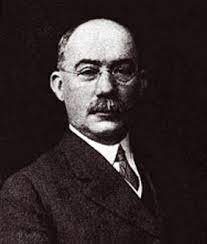Despite a project tracking tool designed by Karol Adamiecki being used in Russia and Poland in the late 19th century, and Hermann Schurch’s similar chart being used widely across Germany by 1912, it’s Henry Gantt whose name has stuck and stood the test of time.
American mechanical engineer Henry Gantt’s chart was designed sometime between 1910 and 1915. He created this visualisation tool to measure productivity levels of employees and gauge which were under or over-performing. We can only imagine that Henry was incredibly fun at parties.
The Gantt chart was used by the United States in World War I, where hand drawn charts would have to be entirely rewritten every time a schedule would change. Spare a thought for those patient souls whenever you start to complain about how much admin you have to do.
The computer
In the 1980s, personal computers arrived, and people all over the world were able to create complex and elaborate Gantt charts whenever they felt like it, without having to draw the whole thing out by hand.
The internet then propelled things further, with collaboration and record keeping over networks allowing people to keep up to speed with projects from wherever they were in the world (when they weren’t looking at videos of cats, that is). More hi-tech solutions started to appear, and by 2012 almost all Gantt charts were made by software that could easily adjust to schedule changes. Primavera P6 turned up. Microsoft Projects did too. All of the project managers in construction used it seamlessly, and everyone on site lived happily ever after.



